中职英语第二册a letter to a friend
- 格式:ppt
- 大小:233.50 KB
- 文档页数:19
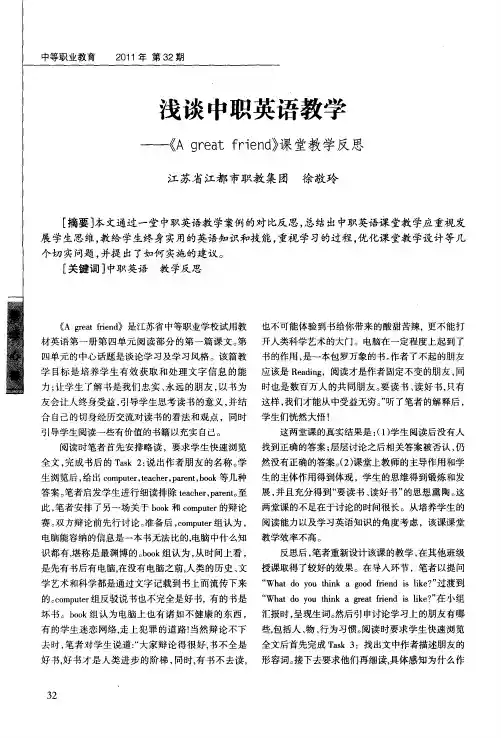
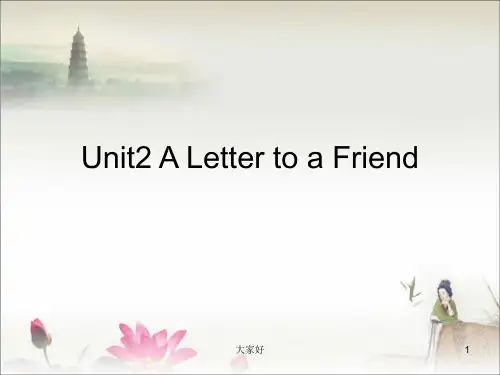
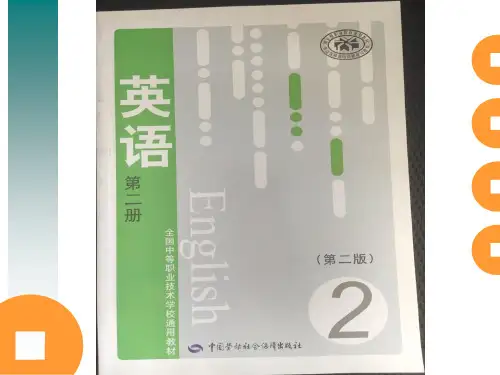
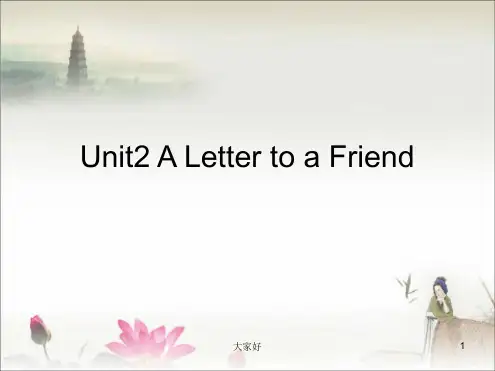

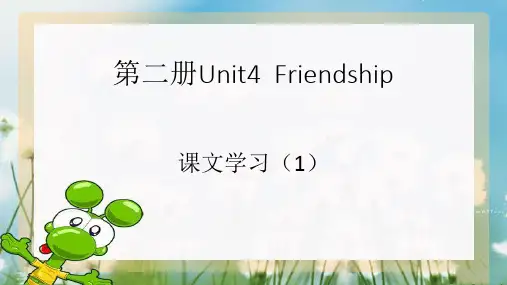
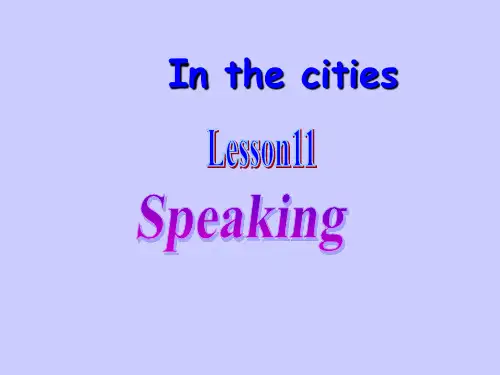
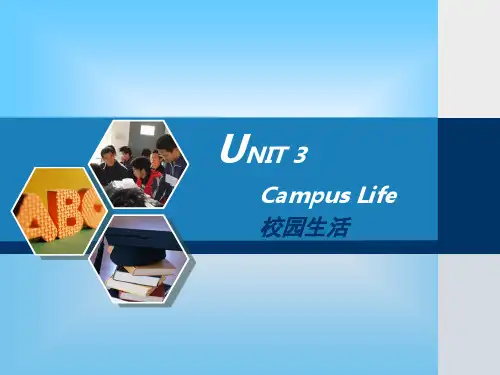
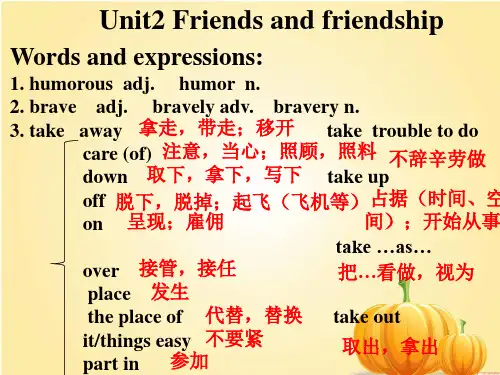
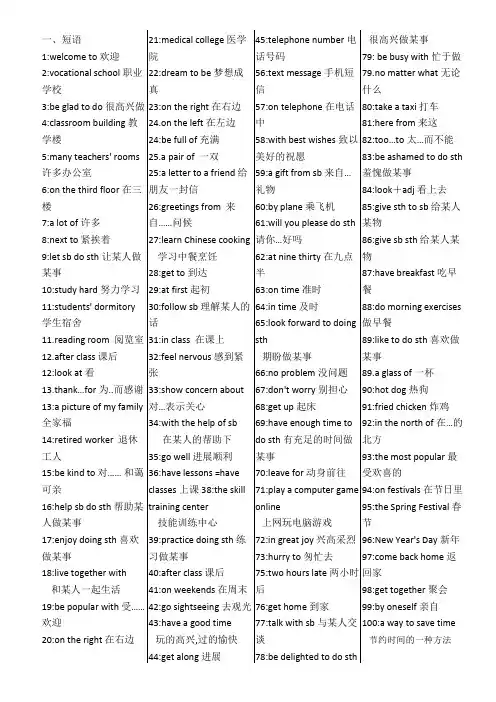
一、短语1:welcome to 欢迎2:vocational school 职业学校3:be glad to do 很高兴做4:classroom building 教学楼5:many teachers' rooms 许多办公室6:on the third floor 在三楼7:a lot of 许多8:next to 紧挨着9:let sb do sth 让某人做某事10:study hard 努力学习11:students' dormitory学生宿舍11.reading room 阅览室12.after class 课后12:look at 看13.thank…for 为..而感谢13:a picture of my family 全家福14:retired worker 退休工人15:be kind to 对…… 和蔼可亲16:help sb do sth 帮助某人做某事17:enjoy doing sth 喜欢做某事18:live together with和某人一起生活19:be popular with 受……欢迎20:on the right 在右边21:medical college 医学院22:dream to be 梦想成真23:on the right 在右边24.on the left 在左边24:be full of 充满25.a pair of 一双25:a letter to a friend 给朋友一封信26:greetings from 来自……问候27:learn Chinese cooking学习中餐烹饪28:get to 到达29:at first 起初30:follow sb 理解某人的话31:in class 在课上32:feel nervous 感到紧张33:show concern about对…表示关心34:with the help of sb在某人的帮助下35:go well 进展顺利36:have lessons =haveclasses上课 38:the skilltraining center技能训练中心39:practice doing sth 练习做某事40:after class 课后41:on weekends 在周末42:go sightseeing 去观光43:have a good time玩的高兴,过的愉快44:get along 进展45:telephone number 电话号码56:text message 手机短信57:on telephone 在电话中58:with best wishes致以美好的祝愿59:a gift from sb 来自…礼物60:by plane 乘飞机61:will you please do sth请你…好吗62:at nine thirty 在九点半63:on time 准时64:in time 及时65:look forward to doingsth期盼做某事66:no problem 没问题67:don't worry 别担心68:get up 起床69:have enough time todo sth 有充足的时间做某事70:leave for 动身前往71:play a computer gameonline上网玩电脑游戏72:in great joy 兴高采烈73:hurry to 匆忙去75:two hours late 两小时后76:get home 到家77:talk with sb 与某人交谈78:be delighted to do sth很高兴做某事79: be busy with 忙于做79.no matter what 无论什么80:take a taxi 打车81:here from 来这82:too…to太…而不能83:be ashamed to do sth羞愧做某事84:look+adj 看上去85:give sth to sb 给某人某物86:give sb sth 给某人某物87:have breakfast 吃早餐88:do morning exercises做早餐89:like to do sth 喜欢做某事89.a glass of 一杯90:hot dog 热狗91:fried chicken 炸鸡92:in the north of 在…的北方93:the most popular 最受欢喜的94:on festivals 在节日里95:the Spring Festival 春节96:New Year's Day 新年97:come back home 返回家98:get together 聚会99:by oneself 亲自100:a way to save time节约时间的一种方法101:more and more popula r越来越受欢迎102:potato chips 炸薯条103:have to 不得不104:tell sb not to do sth 告诉某人不能做某事104.ice cream 冰淇淋105:in fact 事实上106:be good for 对…有好处107: fast food 快餐107. junk food 垃圾食品108:a bowl of rice 一碗米饭109:make dumplings 包饺子110:the kinds of 那几种111:order…from 向…订购112:do me a favor 帮我一个忙113:lend sb a head 帮忙114:take seats =take a seat就座115 because of 因为116:from…to 从…到117:in the fields 田野里118:begin to sth 开始做某事119:turn green 变绿120:come out 生长121:plant trees 植树122:cones after 在…之后到来123:this time of a year 一年当中的这个时候124:go to the seaside 去海边125:on vacation 度假126:stay in 住在127:go swimming 去游泳128:watch TV 看电视129:have seafood 吃海鲜130:the harvest time 收获季节131:get cooler 变冷132:be happy with 因…而高兴133:go skating 去滑冰134:go skiing 去滑雪135:be different from与…不同136:heavy rains 暴雨137:dark screen 黑屏138:get …into trouble使…陷入困境139:havetrouble(in)doing做某事有困难140:be in trouble 处于困境141:wait for 等待142:be down 死机143:allow sb do sth 允许某人做某事144:be allowed to do sth被允许做某事145. allow doing sth允许做某事146:look around 环顾四周147:whether or not 是否148:have on way to do没办法做149:find out 找出150.on business 办事,出差151:point at 指向152:not…but 不是…而是153:it's clear that 很明显154:work on 操作155:be late for 迟到156.booking office 售票处157:have no idea 不知道158.What a pity! 真可惜!真遗憾159:a friend of mine 我的朋友160:agree with 赞同161:remind sb of sth使某人回想起某物162: be full of 充满163:feel sorry for sb 为某人感到遗憾164:expect sb to sth 期待某人做某事165:give up doing sth 放弃做某事166:(one's)the way to 通往…的路167:go on to do 继续做某事168:go on doing 继续做某事169:overcome difficulties克服困难170:phD program 博士课程177:be active in doing 积极做某事178:be out of school 失学179:not …until 直到…才180.something wrongwith …有毛病181:take it easy 别着急。
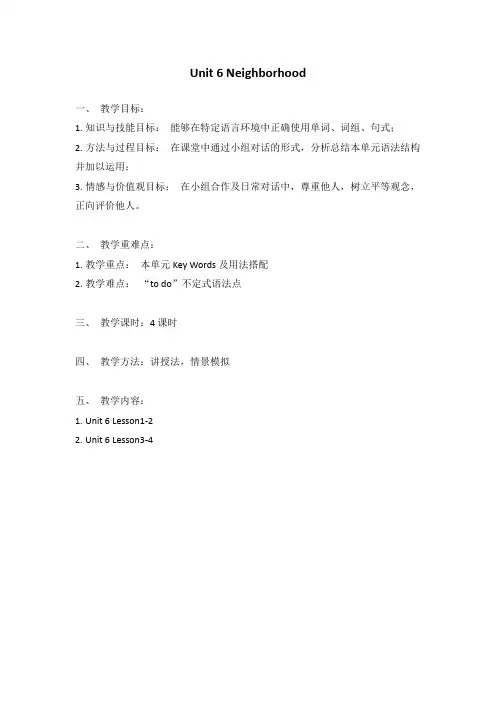
Unit 6 Neighborhood一、教学目标:1.知识与技能目标:能够在特定语言环境中正确使用单词、词组、句式;2.方法与过程目标:在课堂中通过小组对话的形式,分析总结本单元语法结构并加以运用;3.情感与价值观目标:在小组合作及日常对话中,尊重他人,树立平等观念,正向评价他人。
二、教学重难点:1.教学重点:本单元Key Words及用法搭配2.教学难点:“to do”不定式语法点三、教学课时:4课时四、教学方法:讲授法,情景模拟五、教学内容:1.Unit 6 Lesson1-22.Unit 6 Lesson3-4一、Key Words1.Neighborhood: n. 社区,街区Neighbor: n. 邻居“-hood”加在名词后,构成虚拟名词,表一种状态例:boy-boyhood;child-childhood2.Downtown: n. 市中心反义:suburb3.Crime: n. 犯罪(严重违法行为或罪)形容词:criminal各种“罪”Sin:违反道德原则或反宗教的过失Guilt:违反社会道德,含应予惩办之意Violation:违背誓言、条约、良心或权利4.Rent:v. 出租;n. 租金Rent for sth 供出租5.Bet: v. 打赌,断定Make a bet 打赌Bet on 在……上打赌6.Convenient:a. 方便的It’s convenient to do sth名词:convenience 方便性副词:conveniently 方便地7.Excellent:a. 极好的名词:excellence 优秀,卓越词根:excel:v. 擅长,胜过8.Suppose:v. 假设,认为Be supposed to do 应该做某事9.Blonde:a. 金发的10.Jeans:n. 牛仔裤Pants 短裤11.Alone:adv. 独自地Lonely:adv. 孤独地12.Require:v. 需要Require sb to do sth 要求某人做某事Require doing= require to be done 需要被名词:requirement 要求符合要求:meet ones requirementsplete:v. 完成,结束;a. 完全的,齐全的,完成的Complete with“-plet”后水,表示“满”名词:completion 完成,结束,圆满各种“完成”:Finish:圆满结束或完成已着手的Complete:完成预定的任务或使某事完善,补足缺少的部分End:最普通,也指突然中止Conclude:正式用语14.Improve:v. 提高,改善Improve sth名词:improvement15.Project:n. 项目,工程16.Benefit:n. 利益,好处;v. 从…获利Benefit from形容词:Beneficial二、语法:to do 不定式1.作主语,一般需要形式主语例:To become a teacher is her wish.转换:It is her wish to be a teacher.2.作宾语:(v. +to do 的形式)常见此结构动词:ask, choose, agree, except, learn, prefer,pretend, wish, want, would, like, love3.作宾语补足语(简称宾补)常见此类结构动词:ask, allow, advise, except, invite, encourage, teach, tell, want, wait for, wish, would like例:I want to invite her to have dinner at my home.4.作状语1)表目的:in order to, so as to2)表结果:too……to, enough……to, only……to3)原因状语:sb+v. + a. +to do5.作定语6.作表语:跟在be动词后面,主语是wish,idea,task,jobUnit 7 Job Hunting一、教学目标:1.知识与技能目标:能够在特定语言环境中正确使用单词、词组、句式;2.方法与过程目标:在课堂中通过小组对话的形式,分析总结本单元语法结构并加以运用;3.情感与价值观目标:在小组合作及日常对话中,创设求职场景,梳理职业平等观念,培养学生爱岗敬业的工作作风。
Panjiqu Vocational Education Center Jiang QingzhenLetter tell learn ago when get speak understand follow feel nervous friendly show help well usually sometimes often number sendin class get to at first show concern about with the help of go well have a good time(1)Thank you for your concern about me.(2) Luckily, all the teachers and students here are very kind and friendly to me.(3) In the afternoon, we sometimes go to the skill training center of ourschool to practice cooking skills.(4) I’m glad to say that with th elp of the teachers andmy classmates.(5) Everything is going well.Train the students’ listeni;ng, speaking,reading and writing skillsLet the students love their campus life.1. Students can introduce campus life.2. Pay attention to the form of a letter.3. Students can master key words and phrases.1.Practice methood .2.Four-skill method.1.Practice2. Role play.3.cooperation.1. Some pictures3. A small blackboard2. A tape recording1. Greeting each otherT: Class begins.Ss: Good morning, teacher!T: Good morning, class! Sit down, please.Ss: Thank you.2. Look at the pictures of our new schoolT: Today, I’m very glad. I have some beautiful pictures of our new schoolto show you , Please look at these pictures. This is our new school. Thatis a classroom, i s big and bright . This is a library, That is a dininghall. This is a dormitory and that is a playground. Please read the words “school, classroom, library, playground, dining hall and dormitory ”after me.( In this part, let the students master school buildings and equipment teatatively.)3. Ask and answer(1) T: Look at the pictures, ask and answer in pairs with the following sentence sructures:A: What’s this \ that in English?B: It’s a_______.A: What’s in it?B: There are some/ many / a lot of ___________ in it.T: I’ll give you a few minutes to pracice in pairs.(2) Ask a few pairs to practice dialoges in pairs.( In this part, train the students spoken English and let them go over the knowledge of Unit1 and Unit2.)Step2 Presentation1. Lead in the students’ campus lifeT: Just now we saw some school buildings and equipment, but Ido’nt know what your campus life is. Can you tell me about it?Ss: Yes, we can.T: How many classes do you have in the morning?Ss: Four classes.T: How many classes do you have in the afternoon?Ss : Three classes.T: Do you have any interesting activities after class?Ss: Yes, we do.(In this part, show the students’ real campus life at first to prepare for the next step.)2. Learn the new words and lead to the text A letter to a Friend.(1) T: From thetext I know David’s campus life is rich and interesting . In order to understand the text well, le s learn the new words in Page 137-138. Ask several students to read the new words to check their previewing.(2) Ask a few students to read the key words and phrases on the blackboard to consolidate key vocabulary in the text again. Key Words: letter tell learn ago when get speak understand follow feed nervous friendly show help well usually sometimes often number send Useful Expressions :in class, get to at first, show concern about, go well, with the help of, have a good time( In the part, let the students master key words and useful expressions in the text before listining and reading in order to remove reading obstructions.)Step3 Consolidation1.Show the following questions about the text on the small Bb:(1)What does David do in Haidian Vocational School in Beijing?(2) What does David think of all the teachers and students there?(3)How many classes does David have a day trom Monday to Friday?(4) What does David often do on weekends?2. Play the recording and ask the studends to listen to the tape and find the answers, but some students can look at the text as they listen.3. Ask four students to check the answers.(1) He liarns Chinese cooking in Haidian Vocational School in Beijing.(2) They are kind and friendly.(3) He has seven classes a day.(4) He often goes to have classes of the Chinese language or go sightseeing around the great and beautiful city of Beijing.(In the part, let the students get to know the text step by step.)1. Ask the students to read the text again and to complete the following statements according to the text Page20.2. Check the answers.3. Play the recrding again and ask the students to read after it.T:Please read after the tape and pay attention to pronunciation, intonation and stress.4. The teacher explains knowledge that the students don’t know.5.Ask the students to notice the form of the letter.1. Piont out the instructions to the students .T: Every student has good friends, but they don’t know how your campus life is going. Can you write a letter to tell him /her about it?Ss: Yes, I can.T: When you write a letter to your friend you should pay attention to the form of a letter. I’ll give you some minutes to write.2.When the students write letters the teacher walks around the classroom and help students who need some help .3. Ask a few students to show their letters that are written by themselvesto the other students.The teacher and students sum up knowledge that is learnt in this lesson together.1.Go over the words and expressions in this lesson.2. Read the text ten times.3. Do the exercises on Page21.A: What’s this \ that in English?B: It’s a____.A: What’s in it?B: There are some \ mary \ a lot of____ in it.Letterunderstandwelltellfollowusuallylearnfeelsometimesagonervousoftenwhen getfriendly shownumber sendspeakhelpin class get to at first go well show concern about have a good time with the help of be friendly to sb.1. I’m glad to …2. At first, … .3. We have … classes in the morning.4. How are you getting alone?1. Thank you for your concern about me .2. Luckily, all the teachers and Students here are very kind and friendlyto me.3. In the afternoon, we sometimes go to the skill training center of our school to practice cooking skills.4. I’m glad to say that with the help of the teachers and my classmates, everything is going well.Step9 Teaching ReflectionIn this lesson, I took administrative-level teachings A,B, C accordingto the students ’different foundations. I asked the students of poor foundation to do easy exercises and the students of good foundation to difficult exercises and the others to do middle difficult exercises. That’s the case, they could do well and felt successful, so they may be interested in English. In the future, I am going to train some students who are weak at English after class. I hope that all the students in preschool education class 3can make progress in this school year \academic year.。
Unit3 Campus LifeThe First Period Warming up and Reading Panjiqu V ocational Education Center Jiang QingzhenI.Teaching Aims and Demands1. Knowledge Objects1) Key WordsLetter tell learn ago when get speak understand follow feel nervous friendly show helpwell usually sometimes often number send2)Useful Expressionsin class get to at first show concern about with the help of go wellhave a good time3) Target Language(1)Thank you for your concern about me.(2) Luckily, all the teachers and students here are very kind and friendly to me.(3) In the afternoon, we sometimes go to the skill training center of our school topractice cooking skills.(4) I’m glad to say that with the help of the teachers and my classmates.(5) Everything is going well.2. Ability ObjectsTrain the students’ listeni;ng, speaking,reading and writing skills3.Moral ObjectLet the students love their campus life.II. Teaching Key and Difficult Points1. Students can introduce campus life.2. Pay attention to the form of a letter.3. Students can master key words and phrases.III. Teaching Methods1.Practice methood .2.Four-skill method.IV. Learning strategies1.Practice2. Role play.3.cooperation.V. Teaching Aids1. Some pictures3. A small blackboard2. A tape recordingVI. Teaching ProcedureStep1 Warming up and review1.Greeting each otherT: Class begins.Ss: Good morning, teacher!T: Good morning, class! Sit down, please.Ss: Thank you.2.Look at the pictures of our new schoolT: Today, I’m very glad. I have some beautiful pictures of our new school to show you , Please look at these pictures. This is our new school. That is a classroom, it’s big and bright . This is a library, That is a dining hall. This is a dormitory and that is a playground. Please read the words “school, classroom, library, playground, dining hall and dormitory” after me.( In this part, let the students master school buildings and equipment teatatively.)3. Ask and answer(1) T: Look at the pictures, ask and answer in pairs with the following sentence sructures:A: What’s this \ that in English?B: It’s a_______.A: What’s in it?B: There are some/ many / a lot of ___________ in it.T: I’ll give you a few minutes to pracice in pairs.(2) Ask a few pairs to practice dialoges in pairs.( In this part, train the students spoken English and let them go over the knowledge of Unit1 and Unit2.)Step2 Presentation1. Lead in the students’ campus lifeT: Just now we saw some school buildings and equipment, but Idon’t know what your campus life is. Can you tell me about it?Ss: Yes, we can.T: How many classes do you have in the morning?Ss: Four classes.T: How many classes do you have in the afternoon?Ss : Three classes.T: Do you have any interesting activities after class?Ss: Yes, we do.(In this part, show the students’ real campus life at first to prepare for the next step.)2. Learn the new words and lead to the text A letter to a Friend.(1) T: From the text I know David’s campus life is rich and interesting . In order to understand the text well, let’s learn the new words in Page 137-138. Ask several students to read the new words to check their previewing.(2) Ask a few students to read the key words and phrases on the blackboard to consolidate key vocabulary in the text again. Key Words: letter tell learn ago when get speak understand follow feed nervous friendly show help well usually sometimesoften number send Useful Expressions :in class, get to at first, show concern about, go well, with the help of, have a good time( In the part, let the students master key words and useful expressions in the text before listining and reading in order to remove reading obstructions.)Step3 Consolidation1.Show the following questions about the text on the small Bb:(1)What does David do in Haidian V ocational School in Beijing?(2) What does David think of all the teachers and students there?(3)How many classes does David have a day trom Monday to Friday?(4) What does David often do on weekends?2. Play the recording and ask the studends to listen to the tape and find the answers, but some students can look at the text as they listen.3. Ask four students to check the answers.(1) He liarns Chinese cooking in Haidian V ocational School in Beijing.(2) They are kind and friendly.(3) He has seven classes a day.(4) He often goes to have classes of the Chinese language or go sightseeing around the great and beautiful city of Beijing.(In the part, let the students get to know the text step by step.)Step4 Practice1. Ask the students to read the text again and to complete the following statements according to the text Page20.2. Check the answers.3. Play the recrding again and ask the students to read after it.T: Please read after the tape and pay attention to pronunciation, intonation and stress.4. The teacher explains knowledge that the students don’t know.5.Ask the students to notice the form of the letter.Step5 Extending1.Piont out the instructions to the students .T: Every student has good friends, but they don’t know how your campus life is going. Can you write a letter to tell him /her about it?Ss: Yes, I can.T: When you write a letter to your friend you should pay attention to the form of a letter. I’ll give you some minutes to write.2.When the students write letters the teacher walks around the classroom and help students who need some help .3. Ask a few students to show their letters that are written by themselves to the other students.Step6 SummaryThe teacher and students sum up knowledge that is learnt in this lesson together.Step7 Homework1.Go over the words and expressions in this lesson.2. Read the text ten times.3. Do the exercises on Page21.Step8 Blackboard DesignUnit3 Campus LifeThe First PeriodWarming up and ReadingSentence Structures:A: What’s this \ that in English?B: It’s a____.A: What’s in it?B: There are some \ mary \ a lot of____ in it.Key Words:Letter tell learn ago when get speak understand follow feel nervous friendly show helpwell usually sometimes often number sendUseful Expressions:in class get to at first go well show concern about have a good time with the help of be friendly to sb.Key Sentence Structures:1. I’m glad to …2. At first, ….3. We have …classes in the morning.4. How are you getting alone?Key Sentences:1. Thank you for your concern about me .2. Luckily, all the teachers and Students here are very kind and friendly to me.3. In the afternoon, we sometimes go to the skill training center of our school to practice cooking skills.4. I’m glad to say that with the help of the teachers and my classmates, everything is going well.Step9 Teaching ReflectionIn this lesson, I took administrative-level teachings A,B, C according to the students’different foundations. I asked the students of poor foundation to do easy exercises and the students of good foundation to difficult exercises and the others to do middle difficult exercises. That’s the case, they could do well and felt successful, so they may be interested in English. In the future, I am going to train some students who are weak at English after class. I hope that all the students in preschool education class 3 can make progress in this school year \academic year.。